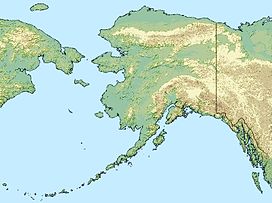- Mount Crillon
-
Mount Crillon Glacier Bay National Park, Hoonah-Angoon Census Area, Alaska, USA Elevation 12,726 ft (3,879 m) Prominence 7,214 ft (2,199 m) Location Range Fairweather Range, Saint Elias Range Coordinates 58°39′46″N 137°10′19″W / 58.66278°N 137.17194°WCoordinates: 58°39′46″N 137°10′19″W / 58.66278°N 137.17194°W Topo map USGS Mount Fairweather C-4 Quadrangle Climbing First ascent 1934 by Bradford Washburn, H. Adams Carter Easiest route West ridge: glacier/snow/ice/rock climb (Alaska Grade 4) Mount Crillon is a high peak of the Fairweather Range, the southernmost part of the Saint Elias Range. It lies southeast of Mount Fairweather, in the promontory between the Gulf of Alaska and Glacier Bay. It is included in Glacier Bay National Park. The peak was named after Felix-Francois-Dorothee de Bretton, Comte de Crillon, by his friend, the French explorer Jean Francois de Galaup de la Perouse.
Location
Mount Crillon lies about 20 miles (32 km) southeast of Mount Fairweather. It is near the southern end of the Fairweather Range (only one 10,000 foot (3,050m) peak lies south of it, Mount La Perouse). It is 10 miles (16 km) due east of the head of Lituya Bay, a small inlet of the Gulf of Alaska (itself part of the Pacific Ocean). The North and South Crillon Glaciers flow west from the peak toward Lituya Bay. The La Perouse Glacier flows south from the peak. The north side of the peak forms the head of the southern branch of the Johns Hopkins Glacier, which empties into Johns Hopkins Inlet, off of Glacier Bay. To the east of the peak lies the large icefield which forms the head of the Brady Glacier, the southernmost of the large glaciers of the Saint Elias Range.
Notable Features
Mount Crillon is notable for its local relief, as it drops 9,000 feet (2,700 m) in less than 4 mi (6.4 km) on both its north and west faces. Also, due to its proximity to the ocean, it is often subject to harsh weather, which makes the name of the Fairweather Range quite ironic.
Climbing
The first ascent of Mount Crillon was in 1934, by famed explorer Bradford Washburn and longtime editor of the American Alpine Journal H. Adams Carter. It is not climbed frequently, since its difficulty is not matched by its elevation.
Notable ascents
- 1934 East Ridge above the Plateau, FA of peak, Bradford Washburn and H. Adams Carter,summit attained July 19, 1934.[1]
See also
Sources
Michael Wood and Colby Coombs, Alaska: A Climbing Guide, The Mountaineers, 2001.
References
External links
Categories:- Landforms of Hoonah–Angoon Census Area, Alaska
- Mountains of Alaska
- Glacier Bay National Park and Preserve
Wikimedia Foundation. 2010.

